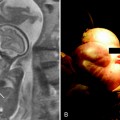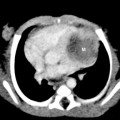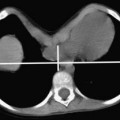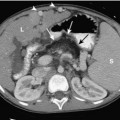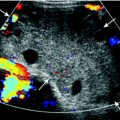CHAPTER ONE Special Considerations in Pediatric Imaging
PEDIATRIC RADIOLOGY AS A POTENTIAL CAREER
Most pediatric radiologists are very happy with both their jobs and their career choice. I know that I am. There are a number of attractive aspects about pediatric radiology. First, one of the most important elements of job satisfaction is the quality of the interactions you have with the people with whom you work. In general, the physicians who choose to go into pediatric subspecialties, as well as health care workers who choose to work at pediatric institutions in general, tend to be nice, gentle people. Aggressive, power-hungry people tend not to want to work with children. This makes a huge difference in the quality of daily life. Also, pediatric subspecialists seem to rely on the opinions of pediatric radiologists more than many of their adult subspecialist counterparts. Similarly, pediatric radiology does not seem to have the same number of turf battles that many adult-oriented departments have.
INTRODUCTION: SPECIAL CONSIDERATIONS IN PEDIATRIC IMAGING
Relationship Between Imager and Parents
In both pediatric and adult patient care situations, there are family members with whom the imager must interact. However, in the pediatric setting, there are several unique features in the relationship among imager, patient, and family. When caring for children, communication more often takes place between the radiologist and the parent than between the radiologist and the patient. Obviously, communication directly with the child is also paramount to success. In addition, the degree of interaction between the imager and the child-parent unit may be greater in the pediatric than in the adult setting because of associated issues, such as the potential need for sedation, the need for consent from the parent rather than the child (if the child is a minor), and the need for intense explanation of the procedure on the levels of both the child and the parent. People are also much more inquisitive and protective when their children are involved. Because of these reasons, descriptions of what to expect during the visit to the imaging area may have to be more detailed when dealing with pediatric patients and their parents.
Inability to Cooperate
Infants and young children are commonly unable to cooperate with requirements that typically are easily met by adults. For example, they may be unable to keep still, remain in a certain position, concentrate for more than a brief moment, or breath-hold. Children of various ages have unique limitations. Infants and toddlers are unable to stay still, whereas 3-year-olds are more apt to refuse to cooperate. These limitations affect almost all pediatric imaging examinations: radiography, fluoroscopy, ultrasound, computed tomography (CT), magnetic resonance imaging (MRI), nuclear imaging, and interventional radiology. There are a number of potential solutions and tricks that can be helpful in these situations. Commonly employed techniques include distracting the child, providing child-friendly surroundings (Figs. 1-1, 1-2, 1-3), immobilization, and sedation.
Stay updated, free articles. Join our Telegram channel

Full access? Get Clinical Tree


